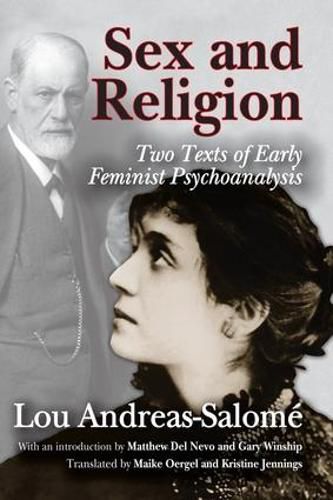Readings Newsletter
Become a Readings Member to make your shopping experience even easier.
Sign in or sign up for free!
You’re not far away from qualifying for FREE standard shipping within Australia
You’ve qualified for FREE standard shipping within Australia
The cart is loading…






As a psychoanalyst and author, Lou Andreas-Salome traverses the mystery of sexuality in much of her work. This book, comprised of two texts originally written for adolescents, uniquely explores sexual education and the collision of sexuality and religion across the lifespan.
The first piece, Three Letters to a Young Boy (1917), is a psychoanalytic fairy tale. The letters offer an interesting version of the evolution of sexual knowledge from childhood through adolescence. The second piece, The Devil & His Grandmother (1922), merges sexuality with religion, encapsulating three ages of woman-child, to a lost soul and the Devil’s bride, to the Devil’s Grandmother. Written in charmingly convoluted dialogue, this work has a cinematic, fanciful feel. Both pieces dispense with academic formality and point to a relaxed new phase in Salome’s writing life. Interestingly, this tone can also be detected in her blossoming correspondence with Sigmund Freud, which contrasts starkly with her sombre letters to Rainer Maria Rilke.
It is with the spirit of free thinking demonstrated in these two selections, perhaps informed by Salome’s experimentation with free association, that the reader is transported to a new theatre of Salome’s imagination.
$9.00 standard shipping within Australia
FREE standard shipping within Australia for orders over $100.00
Express & International shipping calculated at checkout
As a psychoanalyst and author, Lou Andreas-Salome traverses the mystery of sexuality in much of her work. This book, comprised of two texts originally written for adolescents, uniquely explores sexual education and the collision of sexuality and religion across the lifespan.
The first piece, Three Letters to a Young Boy (1917), is a psychoanalytic fairy tale. The letters offer an interesting version of the evolution of sexual knowledge from childhood through adolescence. The second piece, The Devil & His Grandmother (1922), merges sexuality with religion, encapsulating three ages of woman-child, to a lost soul and the Devil’s bride, to the Devil’s Grandmother. Written in charmingly convoluted dialogue, this work has a cinematic, fanciful feel. Both pieces dispense with academic formality and point to a relaxed new phase in Salome’s writing life. Interestingly, this tone can also be detected in her blossoming correspondence with Sigmund Freud, which contrasts starkly with her sombre letters to Rainer Maria Rilke.
It is with the spirit of free thinking demonstrated in these two selections, perhaps informed by Salome’s experimentation with free association, that the reader is transported to a new theatre of Salome’s imagination.